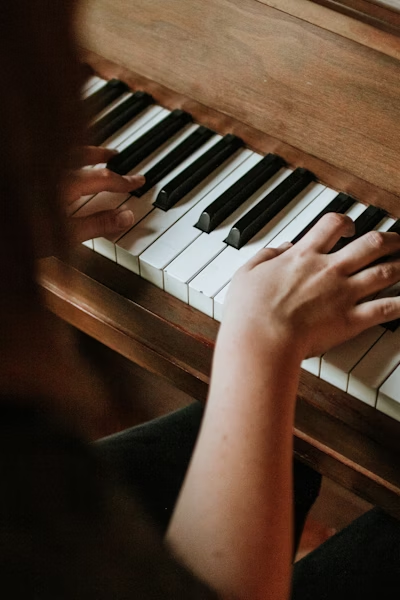Piano Basics
Essential concepts and learning materials to get you started on your piano journey
Getting Started
What You'll Need
- A piano or 88-key keyboard with weighted keys (recommended)
- Stable internet connection for online lessons
- Computer, tablet, or smartphone with camera and microphone
- Music stand or tablet holder for sheet music
- Notebook for practice notes and exercises
Basic Hand Position
Proper hand position is fundamental to piano playing. Your hands should be relaxed, with curved fingers and wrists slightly elevated. Think of holding a small ball in each hand.
Tip: Practice the C position (thumb on C) for both hands to establish muscle memory for proper hand placement.

Music Theory Fundamentals
The Musical Alphabet
A, B, C, D, E, F, G - these seven letters repeat across the keyboard
Black Keys (Sharps & Flats)
Each black key can be called either a sharp (#) or flat (♭) depending on context
Octaves
The distance from one note to the next note with the same name (e.g., C to C)
Middle C
Your reference point - located roughly in the center of the keyboard
Reading Sheet Music
The Staff
Five horizontal lines where notes are placed
Treble Clef
Right hand music, higher pitches
Bass Clef
Left hand music, lower pitches
Note Values
Whole, half, quarter, eighth notes determine rhythm
Practice Tips for Beginners
Practice Daily
Even 15-20 minutes daily is better than one long session weekly
Start Slow
Accuracy before speed - gradually increase tempo as you improve
Focus on Technique
Proper finger position and hand posture prevent injury and improve playing
Repeat Sections
Break difficult passages into small sections and practice repeatedly
Use a Metronome
Develop steady rhythm and timing from the beginning
Be Patient
Learning piano is a journey - celebrate small victories along the way